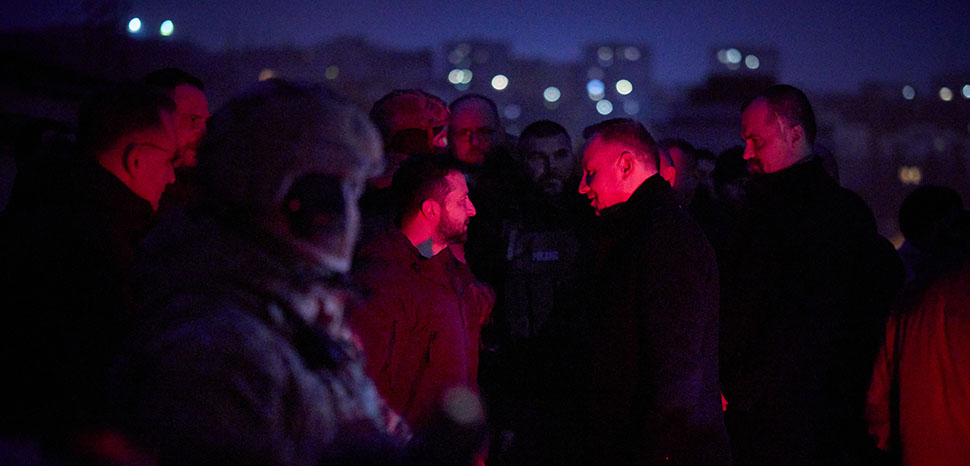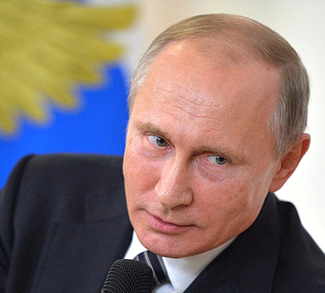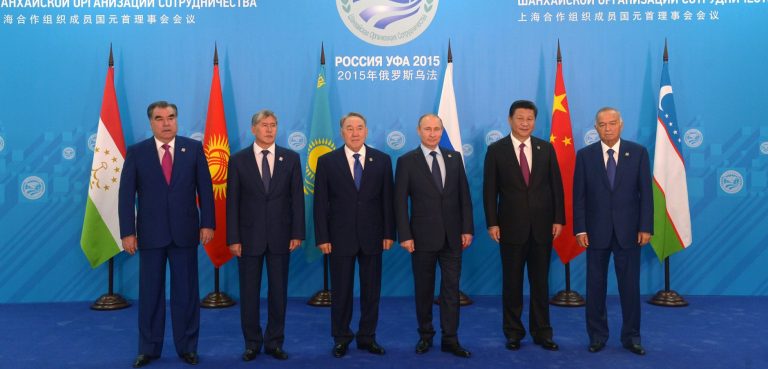While Ukraine has exceeded the initial expectations of many war experts and seems likely to remain on the front foot against the Russian forces that have invaded the country, with this optimism to a large extent attributable to the continued support it has been receiving from the West and the high morale displayed by the Ukrainian troops, the next few months of the war will likely be especially difficult and may be characterized by protracted standoffs rather than opportunities for major counteroffensives for the Ukrainians. Given these realities on the ground, with former US ambassador to Russia Michael McFaul characterizing a “stalemate” on the battlefield as essentially synonymous with continued death and destruction, civilians in many areas of Ukraine who are located quite far from the major theaters of the conflict (such as those based in populated areas in central and western Ukraine) remain vulnerable to missile and drone strikes that are often indiscriminately launched by Russia.
The possibility of a further deterioration in the situation on the ground for Ukrainian non-combatants, especially due to critical civilian infrastructure remaining a target for Russian attacks, coupled with the Western countries’ increased willingness to call the Putin administration’s bluffs with regard to the regime’s nuclear threats, may be regarded as a signal that the time has arrived to revisit a Polish proposal dating back to the early phases of the war, which advocated for the deployment of a peacekeeping mission in Ukraine.
Poland’s Deputy Prime Minister Jarosław Kaczyński was the first one to officially suggest such an idea when the top politicians of Poland, the Czech Republic, and Slovenia traveled to Kyiv in March 2022 in order to meet with top Ukrainian politicians. At the time the details regarding the strategic planning were lacking, but it was clear that the intention was to have a peacekeeping mission under the auspices of NATO or another international structure that was to operate in the Ukrainian territories, which were not occupied by Russia, potentially securing safe havens for civilians. The peacekeepers were to have the backing of armed forces, though with a mandate that precluded the latter from proactively engaging the Russian troops.
The Polish idea generally received a frosty reception, failing to gather steam, with NATO Secretary General Jens Stoltenberg reluctant to discuss it, and it was also viewed with skepticism by Ukrainian president Volodymyr Zelenskyy. However, a year later there are clear indications that the Western countries’ security calculus over Ukraine has changed.
Firstly, a number of signs are present that the West is currently significantly more willing, in comparison to the spring of 2022, to make moves that could be appraised as escalatory by Russia. As stated by Ukrainian Minister of Foreign Affairs Dmytro Kuleba in February 2023, Ukraine has already received six out of the seven types of key weapons needed for the liberation of the country. Furthermore, since early 2023, there is some evidence that the Biden administration has started to be accepting of the idea of providing support to Ukraine to the extent that Russia’s control of Crimea could be put under threat. Thus, the West appears to be prepared to cross what used to be described as a major red line, due to Crimea, which first came under Russian rule in 1783, being viewed as clearly constituting an integral part of the Russian federation by Putin.
The greater confidence and boldness displayed by the West is arguably a reflection of new insights gained into the Putin administration’s modus operandi – concerns pertaining to the Russian side being open to the possibility of launching a tactical nuclear weapon as part of its war strategy, which were frequently raised during the initial stages of the war, appear to be waning. Thus, the trepidation that deploying military personnel for a peacekeeping mission will be vastly irresponsible due to setting in motion events that could potentially trigger a nuclear Armageddon does not appear to have a high degree of credibility.
Western policymakers also need to be cognizant of the reality that the Putin regime itself considers the West and NATO as already being at war with the Russian state. In that regard, Western analysts such as journalist Christopher Caldwell, noting that certain weapons provided to Ukraine are embedded into an American information network (with some precise details actually not shared with the Ukrainians), which contributes to their destructive power, advance the claim that the United States is in essence already a participant rather than merely a provider of materials for the military operations against Russia.
In addition to the abovementioned considerations, the Western countries could refer back to the events of 15 November 2022 when a missile landed in the village of Przewodów in Poland (located near the border with Ukraine), amidst a large Russian strike campaign on Ukraine, resulting in two Polish fatalities. While in that particular instance the explosion was caused by the firing of a Ukraine defense missile, Stoltenberg was adamant that Russia was ultimately to blame for the incident. Thus, it could still plausibly be argued by the West that discouraging Russia from engaging in indiscriminate missile strikes against Ukrainian territories where no battles are currently being waged is perfectly aligned with NATO interests and European security, as it is worth avoiding a repeat of a situation that causes the life and well-being of the citizens of a NATO country to be directly threatened.
As for the Ukrainian president’s own reservations regarding the Polish proposal, the shifting context needs to be taken into account. In March 2022 Zelenskyy still viewed Russia as capable of engaging in good faith peace negotiations and was prepared to discuss Ukrainian neutrality as well as repudiate claims to future NATO membership. However, the subsequent discovery of gruesome war crimes such as those committed in Bucha as well as Russia’s refusal to cede conquered territories, claiming that the “geography has changed,” has caused Zelenskyy to no longer perceive peace talks initiated by Russia as being likely to result in a viable solution to the conflict, as long as Putin remains president.
All in all, even if solely taking Western cost-benefit calculations into account, it does not seem too likely that a humanitarian mission would necessarily accentuate the perception of escalation from the standpoint of the Putin administration, especially given that the West is clearly on a trajectory of increasing support for Ukraine. Targeting NATO personnel on a peacekeeping mission as a result of the launching of missile strikes, even if the Russian government could potentially play the plausible deniability game and claim that it was by no means intentional, is unlikely to be evaluated as a risk worth taking by Russia. In the aftermath of the aforementioned missile explosion incident that occurred on Polish territory, the Russian Defense Ministry was quick to emphasize that there had been no Russian strikes in areas closer than 35 km from the border between Poland and Ukraine, with the Kremlin even praising Biden’s “restrained reaction” to the incident, possibly looking at the US president’s apparent willingness to downplay the implications of the incident with a sense of relief. Such reactions on the part of Russia suggest that Putin and other Russian officials’ bellicose rhetoric pertaining to nuclear weapons notwithstanding, the Russian government is perfectly aware of the inherent risks for their country in case Western or NATO personnel suffer any casualties as a result of Russian aggression. As stated by Alexander Vindman, a former director of European affairs in the National Security Council, during Biden’s visit to Kyiv on 20 February 2023, from the perspective of Ukrainian civilians, the city was likely at its safest since the start of the war.
While there is still an innate aversion in Western circles to any courses of action that could be deemed as the equivalent of “putting foreign boots on the ground,” a limited peacekeeping operation may save thousands of civilian lives, essentially guarantee that the conflict will be confined to the Donbass (and some other territories in the vicinity), prove that the United States does not allow its foreign policy to be dictated by nuclear brinksmanship, and most importantly solidify the Ukrainian resolve, as such a course of action would go beyond a powerful statement of intent on the part of the West, showing that the latter literally has Ukraine’s back. It will also provide a very strong rebuttal to the accusations (often made by offensive realists and by analysts on the right side of the political spectrum) that the West is merely interested in weakening Russia by sacrificing Ukrainians and is not willing to walk the talk with regard to any risk-taking behaviors.
The views expressed in this article belong to the authors alone and do not necessarily reflect those of Geopoliticalmonitor.com.




